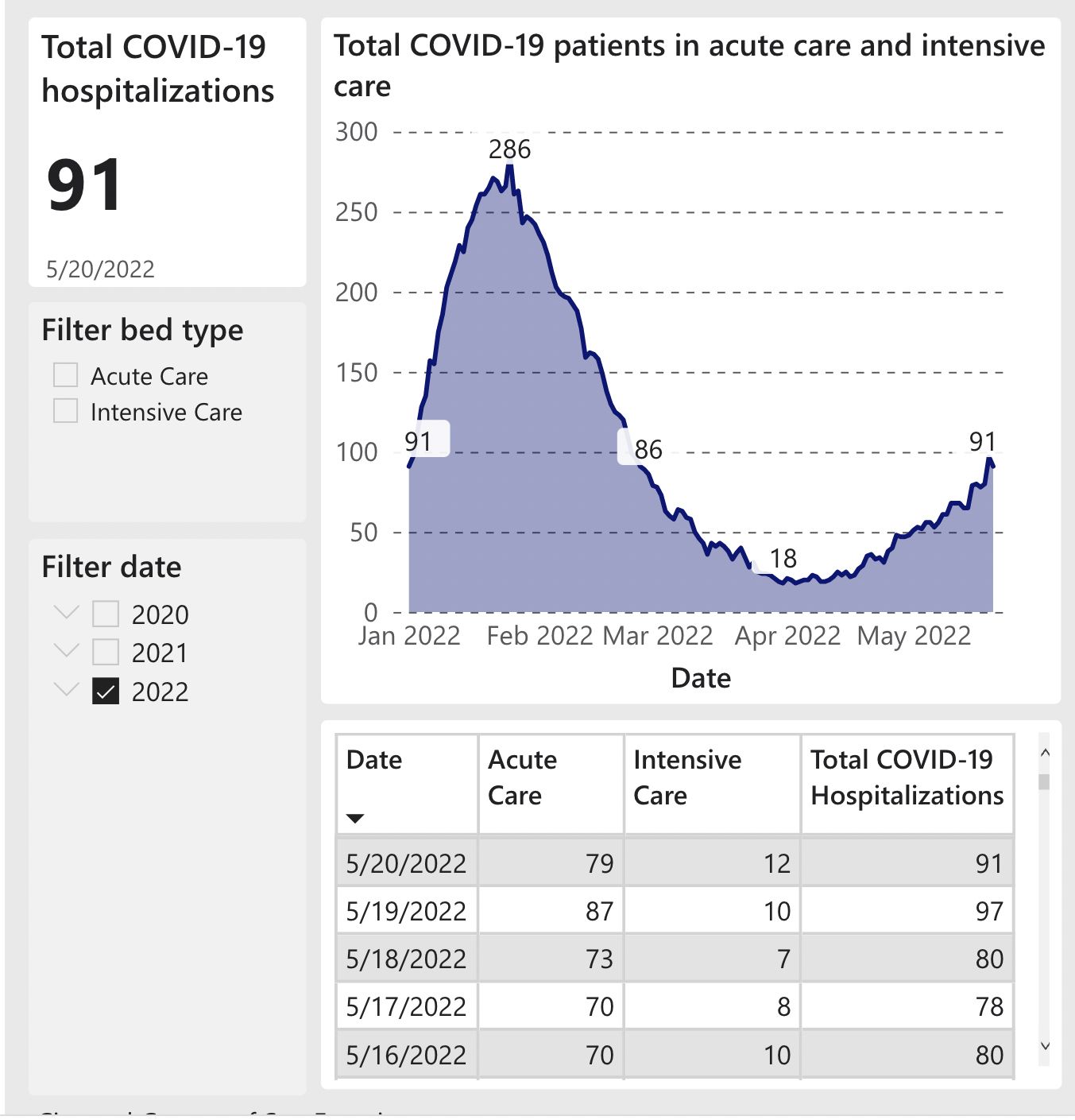Hospitalizations of patients with COVID-19 — some of whom may have been hospitalized for another ailment and happened to be COVID-positive — have ticked back up across California as a result of the latest surge.
This late-pandemic wave of infections, driven by newer subvariants of Omicron, hasn't yet abated, and the impacts on hospitals is now being seen across the region and the state. Daily case counts remain high in San Francisco and elsewhere, though the curve is not as steep as what we saw in early January. Still, with many cases going uncounted in the official numbers due to at-home testing, it's safe to say you probably know someone with COVID right now or someone who was recently infected — and there is anecdotal evidence to suggest that a previous, early-wave infection with Omicron does not guarantee that one of the new subvariants won't infect you again.
The seven-day rolling average of new cases in San Francisco as of last week hit 458, in range with averages seen in early/mid-February.

Across California, hospitalizations ticked up 7% on Monday, with 1,931 patients in hospitals with COVID — returning to a level not seen since mid-March. But there was only a slight lull between the surges when it comes to hospitalizations, with the state hitting a low of 950 COVID patients in hospitals on April 25, and the count has steadily risen in the four weeks since. Still, even with a 100% increase since that low, we are nowhere near the peak hospitalizations of late January, when the state had over 15,400 patients in hospitals.

In the city of San Francisco, hospitalizations have returned to where they were both in early January and in early March, on either side of the first Omicron wave, as seen in the graph below.

Deaths have also remained low in recent weeks, but are likely to tick up in the coming month due a surge in cases nationally.
The U.S. is again averaging over 100,000 new cases per day, for the first time since February. As the New York Times reports, the BA.2.12.1 subvariant of Omicron is now dominant across the country, representing almost 60% of new cases.
Public health officials in the Bay Area have been urging people to mask up in indoor spaces again, though many are still out in bars and restaurants unmasked on any given night. And what we're seeing in the numbers is what a mostly unchecked wave of COVID looks like in a warmer season, with many people vaccinated and boosted, and with variants that can evade much of the existing immunity to at least cause mild infection and continued transmission.
Last week, Berkeley Unified School District reinstated a mask mandate for all students, faculty, and staff. So far, other local school districts have not followed.
Masks only remain a requirement in healthcare settings, long-term care facilities, and on BART, and in some select public spaces.

